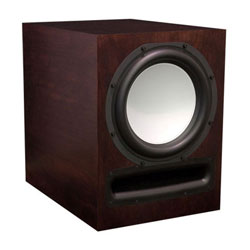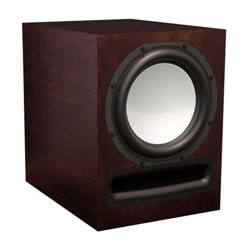Q. I would like a technical explanation as to why it requires more power to recreate a bass note. Also, I find several references about crossovers dividing frequencies. I would like an explanation as to how the crossover diverts the majority of the power from the input signal to the woofer when using a single amplifier. — Bryan

A. Thanks for your e-mail and interesting questions.
All audible sounds have wavelengths. Bass sounds that are reproduced by a woofer have long wavelengths. Think of big ocean waves. The wavelength is the distance between the peak of one big wave to the peak of the next.
The same applies to low frequencies in audio. For example, the bottom key on a grand piano, at 28 Hz, has a wavelength of 40 feet! Consequently a larger diaphragm woofer has to alternately compress and expand the air molecules by moving the cone back and forth 28 times each second in order to generate the compressions and rarefactions—pressure wavesin the air that represent a bass note with wavelengths of 40 feet. That requires lots of power in watts to move the voice coil (motor) and larger cone of a woofer.
All dynamic drivers—woofers, midranges and tweeters—are driven by reciprocating electro-magnetic motors. Moving a large cone, say 6 inches or 12 inches in diameter, takes more energy or amplifier power because the large cone has much greater mass (weight) than a tiny 1-inch diameter titanium tweeter dome and it also has to move farther (longer excursion) than a tweeter dome. The very deepest bass notes require even more power (pipe organ notes in the 20 Hz range have wavelengths of 56 feet), which is why Axiom subwoofers capable of recreating the deepest audible sounds at 20 Hz or lower have large amplifiers of 300 to 600 watts output. Even the notes from an acoustic or electric bass, at 50 Hz, have wavelengths of 22 feet, and 100 Hz, 11 feet, so you can understand the energy required to drive a woofer to recreate those deep bass sounds. By contrast, a tweeter uses a tiny 1-inch dome to reproduce high frequency sounds that only have a wavelength of an inch (10,000 Hz) or less, which requires little amplifier power.
Regarding frequency division by a crossover, all cone/dome loudspeakers can only produce sounds accurately over a limited range of frequencies, so a good speaker system uses at least one passive crossover to divide the frequencies of the entire audible range (20 Hz to 20,000 Hz) into chunks sent to the drivers that can best handle a specific range of sounds. The crossover uses filters, a capacitor (high-pass filter) to let the high frequencies through to the tweeter and block all the low frequencies, and an inductor (low-pass filter), which lets bass frequencies through to the woofer and blocks high frequencies.
In conclusion, bass notes with long wavelengths need larger woofers to generate the necessary air pressure waves; tweeters use a tiny titanium dome to move many thousands of times per second to recreate high frequencies, which only have wavelengths measured in inches. I hope this helps you understand how crossovers work and why far more power is required by woofers for bass notes.





